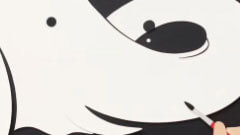Let's Talk
We would love to hear from you. Want to know more about our services or have any questions? Say Hi!
Color Red and Others in Branding

Color is not the only element of marketing strategy. But it’s still the first thing that consumers notice. And the first impression is always the last.
Colors have the power to create subconscious messages. If you observe the logos of big companies you will see how they use colors to strategically grab customers’ attention and position their brand. Here is the amazing story of colors.
For instance, check out Vodafone logo by Saatchi & Saatchi. Designed way back in 1997, it features a speech mark for communication. The red in the logo stands for passion, speech and sound. The silver backdrop, against which the logo is set, represents perfection and sophistication.
When you think red, one logo that immediately strikes to mind is that of Coca-Cola. Some say the brand rebadged Santa Claus; but this is just an urban myth. Coca-Cola set its color much before the 1900s. The actual story goes somewhat like this…
When Coca-Cola started distributing its soft drink, tax officials began to check the loaded trucks. Only to make sure they don’t confuse it with alcohol, Coca-Cola decided to brand its soft drink bottles with striking red.
Color red is energizing. McDonald’s uses it in its logo. Research says that it stimulates hunger. Perhaps that’s the reason so many fast food brands use red in their logos.
Red also signals a sale. Several brands use it as a combination with one of the softer colors like yellow or white. This is to avoid the risk of perception that the brand is going to be out of business.
Subway uses green with red to convey freshness, one of their core brand values. Green signifies health and restoration.
Yellow is preferred by restaurants, as it’s easy to be spotted from a distance. It draw’s starving souls to the eateries.
Sugary products often use blue and pink as a combination. Pink signifies playfulness and sweetness. Take Baskin Robbins for instance. As Carol Austin, the VP of marketing at Baskin Robbins says, the blue and pink in their logo highlight the fun and energy element of the brand.
British Airways uses red with blue. While the red signals warmth and comfort, the blue upholds their values of reliability and trustworthiness.
Telecom companies generally use color blue to convey security and clarity. Ever since Nokia has stepped into telecommunications, there is only one color in their logo – blue.
Do you know who pioneered the famous “little black dress?”
It was Chanel. Black signifies sophistication. Most corporate identities of the past were black and white. Many of today’s hi-end brands also use a hint of black, either as a primary or a combination factor. Black is serious and somber.
Volkswagen has used blue in combination with black to convey reliability and consistency.
Notably, Google is one brand that does not follow rules. So, it has used all primary colors in its logo. You would have seen some cartoon modifications of its logo during birthdays of famous people, holidays and events like Olympics. These have come to be known as Google Doodles.
Brown was the color Starbucks used in its logo, way back in 1972. To represent the color of the coffee beans that it sold then. However, in 1987 it changed its color of the stylized woodcut of its siren to green. This was in deference to the University of San Francisco, which is where the three founders of Starbucks were educated.
Color does not need words to convey the underlying message. Rather than going overboard, you will need to come up with a recognizable set of colors, which people will associate with your brand. The key is to not dilute the power of the color.
Here are a few things to keep in mind while choosing the right combination of colors for your logo:
Use two main colors
The objective behind using colors is to make sure your customers and prospects associate it with your business. If you give them too many colors, there is no chance that they will remember all of them. So ideally your logo should include about two main colors.
Set the tone right
Not only should you pick the right colors you should also focus on getting the tones right. Although different tones might work for some brands, it is better go for similar toned colors.
Add in an accent color
Once you have chosen the two main colors for your logo, you have to start using them consistently in your marketing materials. The next thing you need to do is pick an accent color which will stand out on your pages. This color should be different from your two main colors. You can choose a bright color or a dark one for your accent.
Focus on differentiating colors
Once you start using your two main colors on your site consistently, it becomes easy to pick an accent color that actually pops out. You can use this color to draw your visitors’ attention to your CTA buttons. It is better not to use too many colors while using an accent color; else it will just get lost in the crowd. A good tip here is to follow the 60-30-10 rule.
Your target audience is what you need to keep in mind while choosing colors for your identity. You need to understand how your consumers would feel when they look at your brand. On the other hand, you should also make sure the color you choose sets you apart in the clutter.
We suggest you either Go Bold or Go Home.


